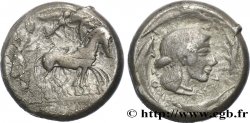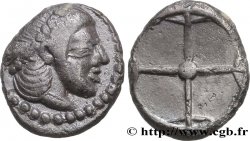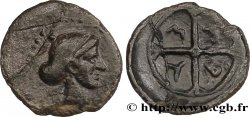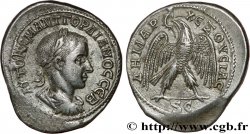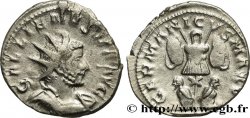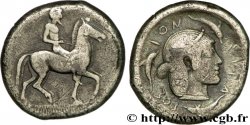MONNAIES 43 (2010)
Starting price : 400.00 €
Estimate : 950.00 €
Realised price : 400.00 €
Starting price : 400.00 €
Estimate : 950.00 €
Realised price : 400.00 €
Type : Didrachme
Date: c. 480-475 AC.
Mint name / Town : Syracusa
Metal : silver
Diameter : 20 mm
Orientation dies : 3 h.
Weight : 7,93 g.
Rarity : R3
Emission: groupe 3, série 11
Coments on the condition:
Exemplaire sur un petit flan épais, parfaitement centré des deux côtés. Usure importante, mais parfaitement lisible et identifiable. Beau droit archaïque. Revers un peu faible. Recouvert d’une jolie patine grise avec des reflets dorés
Catalogue references :
Predigree :
Cet exemplaire provient de MONNAIES 38, n° 64
Obverse
Obverse legend : ANÉPIGRAPHE.
Obverse description : Cavalier au pas à droite.
Reverse
Reverse description : Tête d'Aréthuse à droite, les cheveux relevés et retenus par un diadème de perles, entourée de trois dauphins.
Reverse legend : SURA-KOS-ION
Reverse translation : (de Syracuse).
Commentary
Mêmes coins que l’exemplaire de l’American Numismatic Society (ANS. 26, pl. 1) et de la collection Jameson (n° 1907).








 Report a mistake
Report a mistake Print the page
Print the page Share my selection
Share my selection Ask a question
Ask a question Consign / sell
Consign / sell
 Full data
Full data

